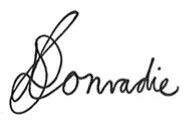
Investor Letter


**inception date is 1 July 1998
Returns are to 30 June 2023 | Source: Peregrine Capital, Morningstar
Our High Growth Fund delivered a net return of 6.9% for the first half of 2023, while the Pure Hedge Fund delivered 5.5%. We are pleased with this performance considering the very difficult macro-economic backdrop faced by the many South African businesses that we invest in. Our fund performance has continued to be largely uncorrelated with that of the overall market, with lower volatility and drawdowns.
On the global front, economies have held up better than what we had expected at the start of the year in the face of high inflation and aggressive interest rate hikes. The domestic picture has been far more difficult, as South Africa battled through the most severe period of loadshedding that the country has ever experienced. This, combined with significant interest rate hikes, made for an extremely difficult economic backdrop. However, this challenging environment and depressed market sentiment has presented attractive bottom-up investment opportunities that have been incorporated into the portfolios.
Peregrine Capital was founded on 1 July 1998, so this letter also marks Peregrine Capital’s 25th Birthday. As investors, it is part of our job to “live in the future”, to try and see where markets will be in 6, 12, or 24 months. However, we think it is also occasionally useful to reflect on the past. We cover a few of the values that have helped us succeed over the past 25 years.
None of what has been achieved would have materialised without the trust that our clients have put in us over the past 25 years. Protecting and growing someone’s hard-earned capital is one of the greatest responsibilities one can have, and we take it very seriously indeed. We appreciate your continued support and will do our very best to continue to deliver over the next 25 years.
Watch Jacques Conradie talk about the last 6 months on the
macro-economy and our funds’ performance.
The South African economy contended with multiple economic headwinds during the first six months of the year. The most damaging blow was delivered by unprecedented and persistent levels of loadshedding, which made it a very challenging period for the South African economy. At peak, most businesses and individuals had to deal with 8 - 10 hours a day without power. The direct and tangible impact on South African businesses has been severe:

The other surprise during the past 6 months has been the resilience of the global economy in the face of the very rapid rate hikes we have seen over the past 15 months. The US Federal Reserve Bank has now hiked interest rates by 500bps, with similar aggressive rate hikes from their UK, EU, and most other developed market counterparts. One would typically expect this to lead to a meaningful economic slowdown and often even painful recessions. However, we have only seen a moderate slowdown in economic activity so far, which has helped bring inflation down from peak levels. Given this resilience, we feel that the probability of a soft landing has increased, and while we could still experience a recession in the next 12 months, the odds of this seem lower now. Markets have priced in the reduced risk of a recession quite accurately over the past 6 months, with most global indices making back a portion of the 2022 losses. It is not yet clear whether inflation will trend all the way down to 2% in the developed world, so it is possible that interest rates will go up further and stay higher for longer. We are holding thumbs that the central bankers can get the job done without doing significant damage to the global economy. So far, so good!
Globally, the past 6 months has been all about generative artificial intelligence (AI). We first covered this trend in our 2022 annual letter, and it has just continued to accelerate over the last 6 months. We really think the potential of this technology is comparable to the invention of the Personal Computer, the Internet, and the Mobile phone. In fact, it has the potential to have an even bigger impact on society than these previous technological waves. This promise has driven the share prices of some AI beneficiaries like NVIDIA to spectacular levels. The funds benefitted from this trend indirectly through our holdings in META (Facebook) and Microsoft. We continue to think through and monitor the opportunities and risks AI will present to the companies in our portfolio.
Most South African fund managers and foreign investors who invest in the JSE became extremely negative on SA over the past 9 months due to the loadshedding situation. Many South African companies' shares have faced relentless selling from these managers which has caused share prices to trend down materially. These low prices have created some fantastic opportunities in a few quality SA companies. We are not scared of being contrarians and putting capital to work when others are running for the exit. So, we were buyers of SA companies into this weakness, as we felt that the share prices gave us ample margin of safety. We think we will make reasonable returns even if the SA environment remains very tough; but we might do very well if the outlook gets just a little bit better. That feels like a good bet to us.
To believe that the low prices of SA equities represent “opportunities” rather than “value traps”, one must be confident that the energy crisis will be resolved. It is often darkest before the dawn. The extent of the challenges facing Eskom, the impending 2024 election and the lack of available funding/capacity has finally forced the ANC government to respond by introducing pragmatic structural energy reforms. By unleashing private sector investment in power generation, we feel confident that the worst of loadshedding is likely behind us. It might even be a thing of the past 18 months from now. We are hopeful that the effectiveness of these reforms may also establish a blueprint that can be used to solve other structural challenges in the logistics, water, and telecommunications sectors. We have included a detailed section on the electricity crisis at the end of this letter.
Over and above this, the repo rate has more than doubled to 8.25%. Higher mortgage, vehicle, and credit card repayments have further dampened disposable income and we are seeing increased impairments emerge at all the banks. We expect to see substantially higher retail impairments across the banks over the next 18 months as a result.
Given this bleak picture that we have painted, it might be somewhat surprising that we have increased our exposure to South African equities over the past 6 months. This takes us to one of the most important concepts in investing. There is a key difference between a great story and a great investment. Our job is not to look for great stories or even just great companies, but for great investments. And the key determinant of whether something will be a good investment comes down to the price you pay compared to what it is worth.
We continue to think through and monitor the opportunities and risks AI will present to the companies in our portfolio.
There is a key difference between a great story and a great investment. Our job is not to look for great stories or even just great companies, but for great investments.
Reduced consumer demand constrains revenue:
Multichoice experienced significantly reduced demand for their pay television services, resulting in a 4% reduction in SA revenue for the second half of the year.
Fashion retailers and retail property companies all noted that foot traffic and sales numbers came under pressure when loadshedding was at its worst.
For those who can afford it, having a generator, solar, or inverter solution has become an absolute necessity. This has impacted the disposable income available to be spent elsewhere.
The impact on consumer confidence has probably been even greater than this. You just don’t really feel like spending money, treating yourself, going out for dinner or entertainment when the lights aren’t on.
Increased operating costs compress profit margins:
Shoprite was burning R150m of diesel per month at peak. This adds up to a staggering amount of R1.8bn of additional annual cost for just one large South African business.
During the worst months of loadshedding, Astral Foods burned R45m of diesel per month. While Astral’s diesel spend was not as large as Shoprite’s on an absolute basis, it had a much larger impact on Astral’s profitability due to its smaller size. Given the pressure on consumer disposable incomes, the recovery of these costs through increased prices has not been possible yet.
This additional cost burden is impacting companies throughout the economy, from large to small.
We thought it would be useful to reflect on a few of the values that have helped us achieve consistently great returns for clients over the past 25 years. Over the very long run, it becomes clear that the values and philosophy of Peregrine Capital play a larger role in success than finding one or two specific good investments.
MERITOCRACY

LEARN AND IMPROVE

From Day One at Peregrine Capital, a foundational value has been the principle of meritocracy. We aim to hire the very best people, and when they join our team, they are not measured by superficial qualities like age, qualifications, or how long they have been working here, but on the inherent quality of their ideas.
We encourage all team members to challenge each other’s ideas, and to present counter arguments to identify where we might be wrong. It is through this open, honest, and vigorous process of challenge and debate that we decide which investments to avoid. And when an idea makes it through this process, it allows us to have high conviction and take meaningful positions.
Meritocracy is a core value for Peregrine Capital and has been a key driver of our long-term success.

How do you generate more than 100x return over 25 years? You consistently compound your returns year in and year out. We believe that you build a great investment firm in the same way, you consistently improve and compound your knowledge. Aim to be a little bit better every month and every year.
“Learn and Improve” is one of our core values exactly because of this. It means we look back at our winners, losers, and missed opportunities on a regular basis. Most people find it easy to analyse their winners. While that is important, the willingness to take a good hard look at your mistakes and missed opportunities is what is required to continually improve.
It is a part of human nature to sweep mistakes under the rug or to wrongfully attribute them to some external factor beyond someone's control. We see this often at companies we analyse. It is difficult to talk about failures, especially if the error was brought on by your own doing. Individuals naturally fear that admitting their own mistakes will negatively impact their job security, position and stature within their organisation, future promotions and bonusses. We believe that swiftly and honestly admitting failures and then analysing and putting processes in place to limit mistakes in future is one of the best learning tools we have.
Investing is a “contact sport”, and we will never totally avoid investment mistakes. However, just avoiding one or two mistakes a year adds up in a big way over longer periods of time.

Looking
Ahead
The redesigned Peregrine Capital brand encompasses our rich heritage, our unwavering dedication to performance in everything we do, as well as introducing a more contemporary aesthetic that will propel us into the next 25 years. We hope you find it enjoyable and engaging.
One thing that we learnt over the past 25 years is that if you identify companies that are trading at a material discount to their intrinsic values, you buy them. If you are correct, the market will identify this, sooner or later, and you will be well rewarded. Saying that, we believe we own some exciting companies in our SA portfolio, whilst also owning attractive investments in the property sector, bonds, and offshore. This diversification of ideas should position our portfolio reasonably well in a wide range of potential future outcomes.As you read this letter and all our future communications, you will see that we have evolved our brand as part of our 25-year celebration. Additionally, we are pleased to announce the launch of our new website, where you can access the latest information about our funds and insights. Please clear your browser’s cache if you get an error when logging in for the first time.

With Thanks



Please contact us via info@peregrine.co.za if you have any questions or comments.

Name | Inception date | Highest annual return | Lowest annual return | Latest 1 year | Latest 5 years | Latest 10 years |
|---|---|---|---|---|---|---|
High Growth Fund | Feb-00 | 53.01% (2004) | -11.98% (2008) | 15.00% | 11.98% | 14.64% |
FTSE/JSE Capped Swix All Share Index | Feb-00 | 47.25% (2005) | -23.23% (2008) | 13.47% | 6.91% | 8.23% |
ASISA South Africa MA High Equity | Feb-00 | 27.49% (2004) | -8.24% (2008) | 16.51% | 7.61% | 7.81% |
Pure Hedge Fund | Jul-1998 | 67.90% (1999) | 1.61% (2008) | 14.18% | 10.86% | 11.79% |
Inflation (CPI) | Jul-1998 | 12.97% (2002) | 0.21% (2008) | 6.00% | 4.89% | 5.16% |
ASISA South Africa MA Low Equity | Jul-1998 | 40.59% (1999) | -10.69% (2008) | 14.49% | 7.19% | 7.25% |
Important Information
*100X refers to the Peregrine Capital High Growth H4 QI Hedge Fund. R1m invested at inception is worth more than R100m today, SA Multi Asset - High Equity Category: R10.2m, FTSE/JSE Capped SWIX: R14.6m. High Growth Fund annualised return: 23.27% | SA Multi Asset - High Equity Category annualised return: 10.44% | FTSE/JSE Capped SWIX annualised return: 12.12%, all since inception (February 2000). Data to 30 June 2023 | Source: Peregrine Capital, IRESS, Bloomberg.

Investor Letter


The other surprise during the past 6 months has been the resilience of the global economy in the face of the very rapid rate hikes we have seen over the past 15 months. The US Federal Reserve Bank has now hiked interest rates by 500bps, with similar aggressive rate hikes from their UK, EU, and most other developed market counterparts. One would typically expect this to lead to a meaningful economic slowdown and often even painful recessions. However, we have only seen a moderate slowdown in economic activity so far, which has helped bring inflation down from peak levels. Given this resilience, we feel that the probability of a soft landing has increased, and while we could still experience a recession in the next 12 months, the odds of this seem lower now. Markets have priced in the reduced risk of a recession quite accurately over the past 6 months, with most global indices making back a portion of the 2022 losses. It is not yet clear whether inflation will trend all the way down to 2% in the developed world, so it is possible that interest rates will go up further and stay higher for longer. We are holding thumbs that the central bankers can get the job done without doing significant damage to the global economy. So far, so good!
Globally, the past 6 months has been all about generative artificial intelligence (AI). We first covered this trend in our 2022 annual letter, and it has just continued to accelerate over the last 6 months. We really think the potential of this technology is comparable to the invention of the Personal Computer, the Internet, and the Mobile phone. In fact, it has the potential to have an even bigger impact on society than these previous technological waves. This promise has driven the share prices of some AI beneficiaries like NVIDIA to spectacular levels. The funds benefitted from this trend indirectly through our holdings in META (Facebook) and Microsoft. We continue to think through and monitor the opportunities and risks AI will present to the companies in our portfolio.
We continue to think through and monitor the opportunities and risks AI will present to the companies in our portfolio.
Most South African fund managers and foreign investors who invest in the JSE became extremely negative on SA over the past 9 months due to the loadshedding situation. Many South African companies' shares have faced relentless selling from these managers which has caused share prices to trend down materially. These low prices have created some fantastic opportunities in a few quality SA companies. We are not scared of being contrarians and putting capital to work when others are running for the exit. So, we were buyers of SA companies into this weakness, as we felt that the share prices gave us ample margin of safety. We think we will make reasonable returns even if the SA environment remains very tough; but we might do very well if the outlook gets just a little bit better. That feels like a good bet to us.
To believe that the low prices of SA equities represent “opportunities” rather than “value traps”, one must be confident that the energy crisis will be resolved. It is often darkest before the dawn. The extent of the challenges facing Eskom, the impending 2024 election and the lack of available funding/capacity has finally forced the ANC government to respond by introducing pragmatic structural energy reforms. By unleashing private sector investment in power generation, we feel confident that the worst of loadshedding is likely behind us. It might even be a thing of the past 18 months from now. We are hopeful that the effectiveness of these reforms may also establish a blueprint that can be used to solve other structural challenges in the logistics, water, and telecommunications sectors. We have included a detailed section on the electricity crisis at the end of this letter.
There is a key difference between a great story and a great investment. Our job is not to look for great stories or even just great companies, but for great investments.
Over and above this, the repo rate has more than doubled to 8.25%. Higher mortgage, vehicle, and credit card repayments have further dampened disposable income and we are seeing increased impairments emerge at all the banks. We expect to see substantially higher retail impairments across the banks over the next 18 months as a result.
Given this bleak picture that we have painted, it might be somewhat surprising that we have increased our exposure to South African equities over the past 6 months. This takes us to one of the most important concepts in investing. There is a key difference between a great story and a great investment. Our job is not to look for great stories or even just great companies, but for great investments. And the key determinant of whether something will be a good investment comes down to the price you pay compared to what it is worth.
Reduced consumer demand constrains revenue:
Multichoice experienced significantly reduced demand for their pay television services, resulting in a 4% reduction in SA revenue for the second half of the year.
Fashion retailers and retail property companies all noted that foot traffic and sales numbers came under pressure when loadshedding was at its worst.
For those who can afford it, having a generator, solar, or inverter solution has become an absolute necessity. This has impacted the disposable income available to be spent elsewhere.
The impact on consumer confidence has probably been even greater than this. You just don’t really feel like spending money, treating yourself, going out for dinner or entertainment when the lights aren’t on.
Increased operating costs compress profit margins:
Shoprite was burning R150m of diesel per month at peak. This adds up to a staggering amount of R1.8bn of additional annual cost for just one large South African business.
During the worst months of loadshedding, Astral Foods burned R45m of diesel per month. While Astral’s diesel spend was not as large as Shoprite’s on an absolute basis, it had a much larger impact on Astral’s profitability due to its smaller size. Given the pressure on consumer disposable incomes, the recovery of these costs through increased prices has not been possible yet.
This additional cost burden is impacting companies throughout the economy, from large to small.
The South African economy contended with multiple economic headwinds during the first six months of the year. The most damaging blow was delivered by unprecedented and persistent levels of loadshedding, which made it a very challenging period for the South African economy. At peak, most businesses and individuals had to deal with 8 - 10 hours a day without power. The direct and tangible impact on South African businesses has been severe:
Watch Jacques Conradie talk about the last 6 months on the
macro-economy and our funds’ performance.
Our High Growth Fund delivered a net return of 6.9% for the first half of 2023, while the Pure Hedge Fund delivered 5.5%. We are pleased with this performance considering the very difficult macro-economic backdrop faced by the many South African businesses that we invest in. Our fund performance has continued to be largely uncorrelated with that of the overall market, with lower volatility and drawdowns.
On the global front, economies have held up better than what we had expected at the start of the year in the face of high inflation and aggressive interest rate hikes. The domestic picture has been far more difficult, as South Africa battled through the most severe period of loadshedding that the country has ever experienced. This, combined with significant interest rate hikes, made for an extremely difficult economic backdrop. However, this challenging environment and depressed market sentiment has presented attractive bottom-up investment opportunities that have been incorporated into the portfolios.
Peregrine Capital was founded on 1 July 1998, so this letter also marks Peregrine Capital’s 25th Birthday. As investors, it is part of our job to “live in the future”, to try and see where markets will be in 6, 12, or 24 months. However, we think it is also occasionally useful to reflect on the past. We cover a few of the values that have helped us succeed over the past 25 years.
None of what has been achieved would have materialised without the trust that our clients have put in us over the past 25 years. Protecting and growing someone’s hard-earned capital is one of the greatest responsibilities one can have, and we take it very seriously indeed. We appreciate your continued support and will do our very best to continue to deliver over the next 25 years.
How do you generate more than 100x return over 25 years? You consistently compound your returns year in and year out. We believe that you build a great investment firm in the same way, you consistently improve and compound your knowledge. Aim to be a little bit better every month and every year.
“Learn and Improve” is one of our core values exactly because of this. It means we look back at our winners, losers, and missed opportunities on a regular basis. Most people find it easy to analyse their winners. While that is important, the willingness to take a good hard look at your mistakes and missed opportunities is what is required to continually improve.
It is a part of human nature to sweep mistakes under the rug or to wrongfully attribute them to some external factor beyond someone's control. We see this often at companies we analyse. It is difficult to talk about failures, especially if the error was brought on by your own doing. Individuals naturally fear that admitting their own mistakes will negatively impact their job security, position and stature within their organisation, future promotions and bonusses. We believe that swiftly and honestly admitting failures and then analysing and putting processes in place to limit mistakes in future is one of the best learning tools we have.
Investing is a “contact sport”, and we will never totally avoid investment mistakes. However, just avoiding one or two mistakes a year adds up in a big way over longer periods of time.
From Day One at Peregrine Capital, a foundational value has been the principle of meritocracy. We aim to hire the very best people, and when they join our team, they are not measured by superficial qualities like age, qualifications, or how long they have been working here, but on the inherent quality of their ideas.
We encourage all team members to challenge each other’s ideas, and to present counter arguments to identify where we might be wrong. It is through this open, honest, and vigorous process of challenge and debate that we decide which investments to avoid. And when an idea makes it through this process, it allows us to have high conviction and take meaningful positions.
Meritocracy is a core value for Peregrine Capital and has been a key driver of our long-term success.
We thought it would be useful to reflect on a few of the values that have helped us achieve consistently great returns for clients over the past 25 years. Over the very long run, it becomes clear that the values and philosophy of Peregrine Capital play a larger role in success than finding one or two specific good investments.

The redesigned Peregrine Capital brand encompasses our rich heritage, our unwavering dedication to performance in everything we do, as well as introducing a more contemporary aesthetic that will propel us into the next 25 years. We hope you find it enjoyable and engaging.
One thing that we learnt over the past 25 years is that if you identify companies that are trading at a material discount to their intrinsic values, you buy them. If you are correct, the market will identify this, sooner or later, and you will be well rewarded. Saying that, we believe we own some exciting companies in our SA portfolio, whilst also owning attractive investments in the property sector, bonds, and offshore. This diversification of ideas should position our portfolio reasonably well in a wide range of potential future outcomes.As you read this letter and all our future communications, you will see that we have evolved our brand as part of our 25-year celebration. Additionally, we are pleased to announce the launch of our new website, where you can access the latest information about our funds and insights. Please clear your browser’s cache if you get an error when logging in for the first time.
Looking
Ahead




Please contact us via info@peregrine.co.za if you have any questions or comments.

With Thanks

*100X refers to the Peregrine Capital High Growth H4 QI Hedge Fund. R1m invested at inception is worth more than R100m today, SA Multi Asset - High Equity Category: R10.2m, FTSE/JSE Capped SWIX: R14.6m. High Growth Fund annualised return: 23.27% | SA Multi Asset - High Equity Category annualised return: 10.44% | FTSE/JSE Capped SWIX annualised return: 12.12%, all since inception (February 2000). Data to 30 June 2023 | Source: Peregrine Capital, IRESS, Bloomberg.
Name | Inception date | Highest annual return | Lowest annual return | Latest 1 year | Latest 5 years | Latest 10 years |
|---|---|---|---|---|---|---|
High Growth Fund | Feb-00 | 53.01% (2004) | -11.98% (2008) | 15.00% | 11.98% | 14.64% |
FTSE/JSE Capped Swix All Share Index | Feb-00 | 47.25% (2005) | -23.23% (2008) | 13.47% | 6.91% | 8.23% |
ASISA South Africa MA High Equity | Feb-00 | 27.49% (2004) | -8.24% (2008) | 16.51% | 7.61% | 7.81% |
Pure Hedge Fund | Jul-1998 | 67.90% (1999) | 1.61% (2008) | 14.18% | 10.86% | 11.79% |
Inflation (CPI) | Jul-1998 | 12.97% (2002) | 0.21% (2008) | 6.00% | 4.89% | 5.16% |
ASISA South Africa MA Low Equity | Jul-1998 | 40.59% (1999) | -10.69% (2008) | 14.49% | 7.19% | 7.25% |
Important Information





